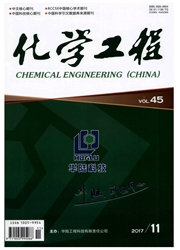

 中文摘要:
中文摘要:
选取62%充注率去离子水振荡热管实验为例,结合前人得到的振荡热管的可视化实验研究成果,揭示了随加热功率不同,振荡热管运行特征、温度振荡及传热机理的对应变化过程。结果显示:振荡热管在没有启动振荡之前,管内工质没有明显宏观质量迁移运动,蒸发段、冷凝段壁面温度均无振荡变化;在启动振荡之后,随着加热功率的增大,管内工质由上下徘徊振荡、不稳定振荡循环流动至稳定单向循环流动;流型的变化也由泡状流、弹状流、塞状流至环状流转变,流速增大;伴随流型、流速的改变,蒸发段、冷凝段壁面温度的振荡变化由没有振荡、大幅度小频率、至小幅度大频率振荡,传热能力不断增强,热阻不断减小。文中为建立振荡热管理论模型、认识其传热规律提供参考。
 英文摘要:
英文摘要:
By adopting the oscillating heat pipe (OHP) experiment with 62% filling ratios (FRs) deionized water, and combining with the predecessors' results attained by visual OHP experiments, the variation processes corresponding to the operation characteristic, the temperature oscillation and the heat-transfer mechanism of OHP were revealed at different heating input. The results show that before the emergence of the oscillation in OHP, no apparent macroscopic mass transfer happens in OHP, which contributes to few oscillatory change of the wall temperature in the evaporation and the condensation section; when oscillations are triggered, as the increase of heating input, the working fluid in the OHP successively experiences up-down lingering oscillation, unsteady oscillatory circulation flow to steady one-way circulatory flow; the transformation of the flow pattern is : bubble flow, slug flow, plug flow and annular flow, and the flow velocity ascended; as the alternation of the flow pattern and velocity, the oscillatory variations of the wall temperature in the evaporation and condensation sections successively experience no oscillation, large amplitude with low frequency and small amplitude even higher frequency pattern, along with enhancement of heat transfer capability and decreasing of thermal resistance. The result offers the references for establishing theoretical model and understanding heat-transfer rule of the OHP.
 同期刊论文项目
同期刊论文项目
 同项目期刊论文
同项目期刊论文
 期刊信息
期刊信息
